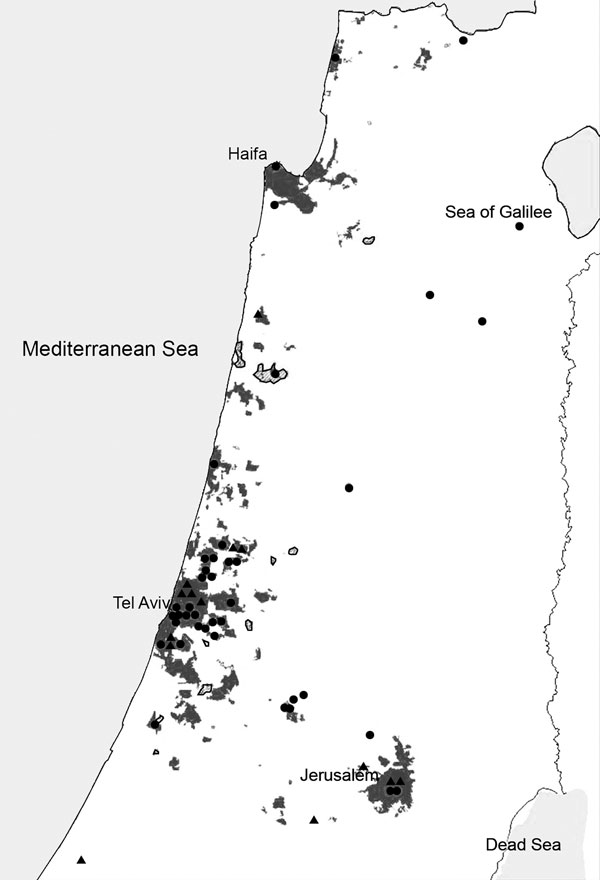Volume 18, Number 2—February 2012
Letter
Risk for Emergence of Dengue and Chikungunya Virus in Israel
Figure

Figure. Patients with imported dengue (black circles) or chikungunya (black triangles) virus infection living in Aedes albopictus–endemic areas of Israel, 2008–2010. Gray shading indicates known and black outline suspected A. albopictus–endemic areas. Of the patients with dengue and chikungunya virus disease, 66% (27/41) and 80% (12/15), respectively, lived in A. albopictus–endemic areas.
Page created: January 24, 2012
Page updated: January 24, 2012
Page reviewed: January 24, 2012
The conclusions, findings, and opinions expressed by authors contributing to this journal do not necessarily reflect the official position of the U.S. Department of Health and Human Services, the Public Health Service, the Centers for Disease Control and Prevention, or the authors' affiliated institutions. Use of trade names is for identification only and does not imply endorsement by any of the groups named above.